Introduction
The population of Hong Kong in the early 1840s was about 6,000 people, increasing to 125,000 in 1865 (about 2,000 were Americans and Europeans) (source).
Increasing numbers of inhabitants lead to increasing traffic on the roads. As the “Colony of Hongkong and its Dependencies” was a civilized area and had a tendency to set rules for every aspect of life, there obviously was the need for a regulation.
The following statements are about Hong Kong Island, Kowloon is presented in the annex.
Chairs and horses
On the 8th day of July, 1863, the following was published in the Hongkong Government Gazette
An Ordinance to provide for the regulation of Public Vehicles and Chairs and their Drivers
and Bearers, and to license the Hire of Horses, within the Colony of Hongkong.
Details can be read online. Interesting to note is the fact that the bearers of chairs had to fulfill numerous obligations including paying for a license, having numbers on their chair, and obey many rules of conduct. On the other hand, the only obligation for users or clients was to pay the (governmental fixed) fare.
A typical chair, or as we say today, sedan chair of this time (1870s) is shown on photo below (of course, with the number of its license)
One chapter is of particular interest for me:
Public Vehicles and Chairs shall when unengaged stand ready for hire at such Streets and Places as the Registrar General shall from time to time direct.
This shows that from early times, stands or ranks were assigned for two reasons:
- public vehicles and chair should not obstruct traffic
- customers should know where they can find means of transport.
Editorial insert
Hong Kong Government Reports Online (HKGRO) are a source of valuable information. Unfortunately, all documents in this database are pdf files only, therefore it is impossible to search for any words or phrases. University of Hong Kong Library, which holds the database, added many tags to the individual entries to allow the search for specific topics. Unfortunately again, this is not consistent and you need a lot of phantasy to find terms (words) to use for the search. Example: searching for rickshaws you type in rickshaw, ricksha, jinricksha and even jinrikisha – and you find sometimes different entries. Another example is the search for the Public Vehicles and Chairs Ordinance. Neither “ordinance” nor “vehicle”, “chair”, “public” will find the desired entry. I found it indirectly when I used “chair”. An entry from 1883 referred to an ordinance no. 6 from 1893. But there is no ordinance no. 6 in the database. The desired entry is found under “HONGKONG. ANNO VICESIMO SEXTO VICTORIE REGINE.NO. 6 OF 1863”. So to find specific entries one needs phantasy, time and patience. A last item to add: if one finds a document under a certain tag, it’s there. If you don’t find an entry, it doesn’t mean, it’s not there. Sometimes difficult for time lines and “first appearances”.
In the Government Gazette from 1863, the following list is published on the base of the aforesaid 1863 ordinance:
It gives locations for stands and sets fares for the transport to different locations.
The oldest photo I found so far of a sedan chair stand is from the 1890s. The photo below shows the one at the bottom of Wyndham Street
Jinrikishas (Rickshaws)
In the 1870s, an addition to the means of transport appeared (details here: The Hong Kong Rickshaw over Time). From Japan, a two-wheeled carriage, drawn by a man and known in Japan as "Jinrikisha" [jin (man) riki (power) sha (carriage)], was brought to Hong Kong in 1874 for private use. Soon this type of transport aroused the interest of customers, and more and more Jinrikishas appeared on the roads. From 1880 to 1882, the number increased from 30 to several hundreds. In 1882 and 1883 , the Public Vehicles Ordinance from 1863 was revised and Jinrikishas were added. Typical appearance of a rickshaw on this photo (together with a sedan chair)
In the early days there was no regulation for the design and size of rickshaws. Many of these were wide enough to carry two people [Unfortunately, I didn't find any photo of these wider rickshaws - possibly one shown here]. The weight of two passengers on the rickshaws’ narrow wheels meant they cut up the road surface, especially in rainy times.
And it was crowded on the roads, see photo from the mid-1880s below.
In the Vehicles Ordinance from 1887 the number of rickshaws was limited to 500, width between the wheels was limited to 36 inches, the seat to 21 inches and broader tyres of one inch became obligatory for new rickshaws. The ordinance is shown below:
Interesting to note that fares were reduced compared to 1863. One hour chair with two bearers is now (1887) 20 cents, in 1863 it was 25 cents for a cloth-covered chair.
Stands for rickshaws and sedan chairs 1894
As indicated before it is very difficult to find stands for chairs and rickshaws on Hong Kong Government Reports Online (HKGRO). Found one from 1894:
One stand (or rank) from the 1894 list is the one in front of the HSBC HQ Building (2nd gen).
Another photo from this time is the one below. It shows Cochrane Street and the junction with Queen’s Road Central. It is the only photo I found so far showing a plaque “Vehicle Stand”, visible on the house left above the rickshaw.
Stands for rickshaws and sedan chairs 1909
The next list I found is from 1909 with an increased number of rickshaw stands.
The photo below shows the rickshaw stand on Queen’s Road Central near Duddell Street. On the left is the sedan chair stand on Queen’s Road Central, west of Ice House Street.
Stands for rickshaws and sedan chairs 1921
A "Report on the improvement of Jinrikisha services in Hongkong during the year 1919" refers that the number of rickshaw licenses was 1231 on Hong Kong Island and 600 in Kowloon.
Here’s the list for 1921:
The photo below shows the rear part of the queue of rickshaws west of the Star Ferry Pier:
A sedan chair stand, this time on the Peak is shown below, it’s at the Barker Road Station of the Peak Tram.
Stands for Public Jinrickshas, Public Chairs and Motor Cars/Taxi-Cabs 1924
Here the list for 1924:
The photo below shows D’Aguilar Street with the rickshaw rank on the right and the sedan chair stand on the left, a bit uphill from the rickshaws.
For the first time stands for (motor) taxis are given on the list. The taxi stand at the Star Ferry Pier in Central is shown below.
The history of taxis in Hong Kong is a different story and is not followed in this post. Also buses were used for public transport, this still is another story.
Stands for rickshaws and sedan chairs 1935
One sedan chair stand from the list is shown below.
Timeline for rickshaws and sedan chairs stands 1863-1935
During the years, the number of stands first increased, but decreased from the 1920s. One reason surely was the upcoming of motor taxis.
|
year |
sedan chair stands |
rickshaw stands |
taxi stands |
|
1863 |
13 |
- |
- |
|
1894 |
28 |
71 |
- |
|
1909 |
29 |
93 |
- |
|
1921 |
49 |
68 |
- |
|
1924 |
43 |
60 |
23 |
|
1935 |
30 |
47 |
24 |
Looking at sedan chair and rickshaw stands/ranks ends in 1941 with the Japanese invasion and the end of the reports on Hong Kong Government Reports Online.
After the war, sedan chairs and rickshaws were widely in use in the 1940s and 1950s (many photos on Gwulo show that), but in the 1960s, they faded out.
Annex: Stands for rickshaws in Kowloon
To find information about stands in Kowloon is even more difficult than on Hong Kong Island. Only rickshaws stands are compiled there, likely because they were faster compared to sedan chairs and Kowloon was quite flat compared to the island.
Here are two lists: one from 1905 and one from 1920.
One of the largest stands was the one at the Kowloon Star Ferry Pier, see below:
The number of stands increased dramatically from 5 in 1905 to 45 in 1920. This clearly shows the growing importance of Kowloon as a residential and commercial area in the early 20th century. Although not followed any further, it is very likely that - parallel to the situation on HK Island - motor taxis took over from the rickshaws after WW2.
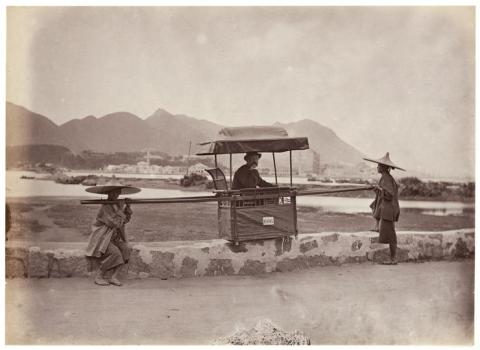
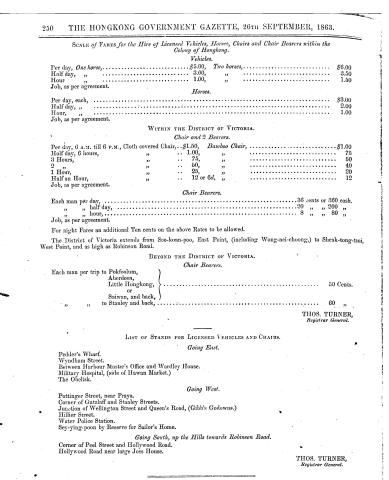
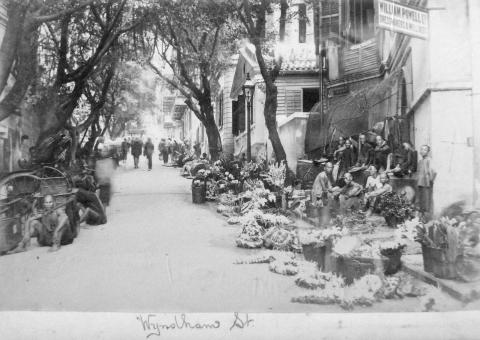
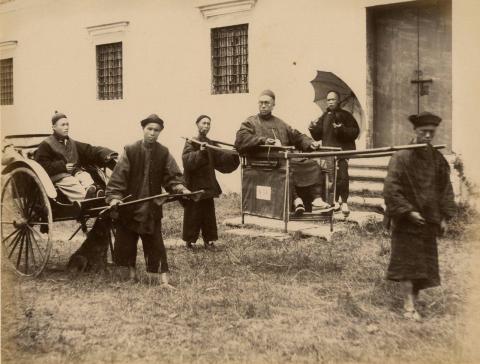
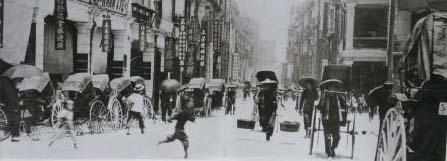
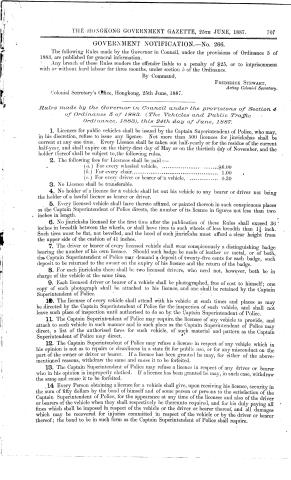
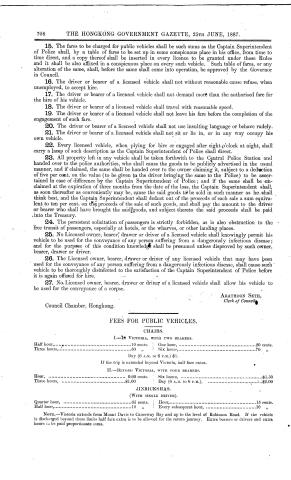
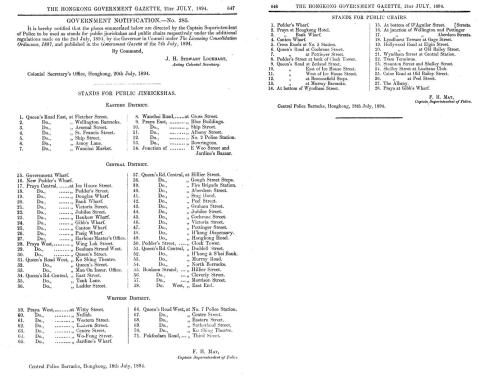
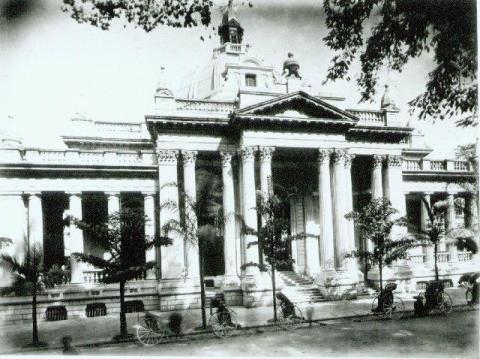
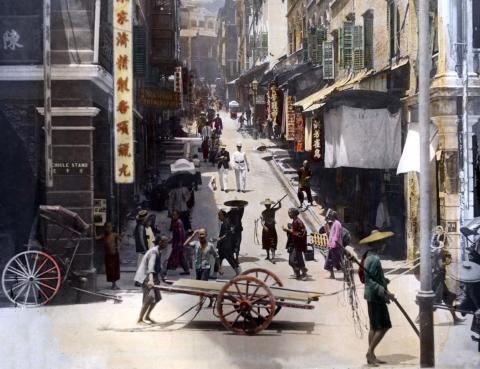
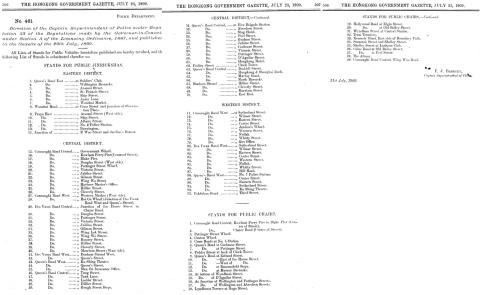

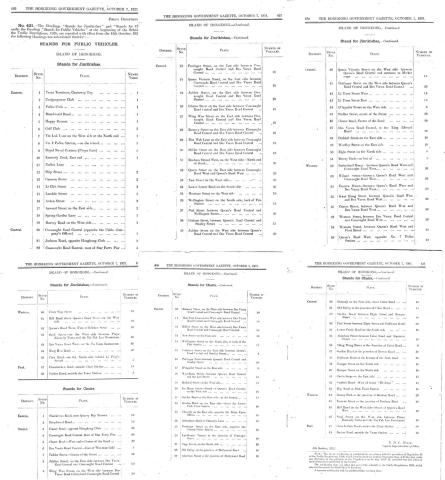

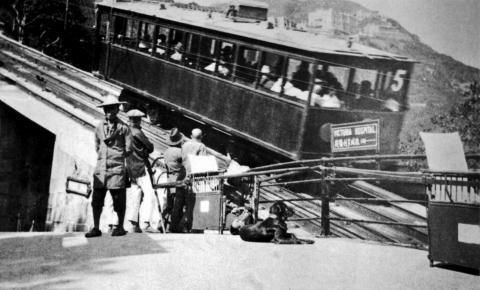
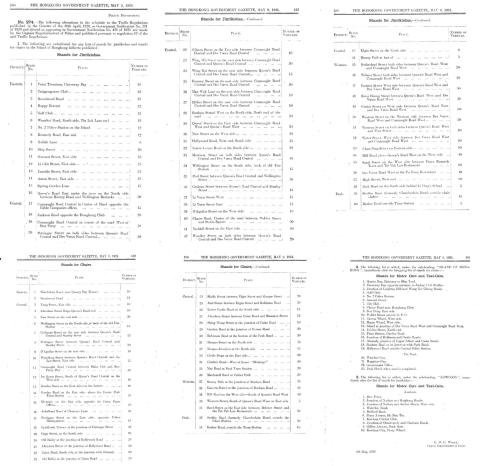


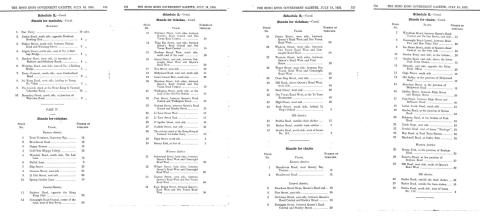
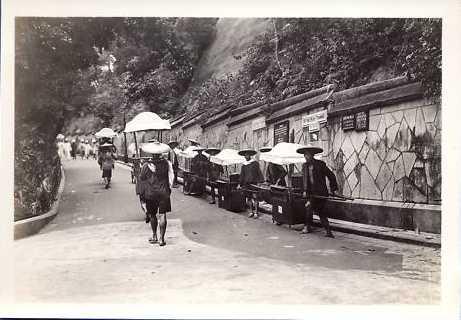
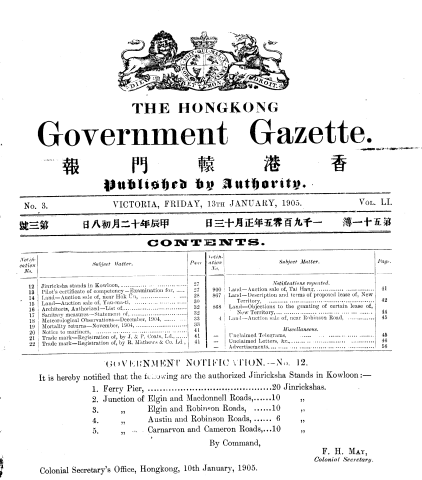
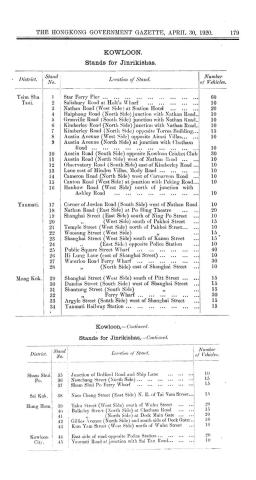
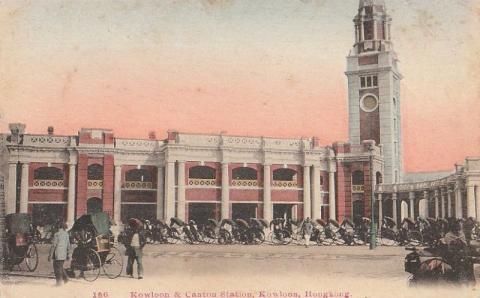
Good Work
Thanks for the massive trawl through the HKGRO archives and very useful presentation of information.
List of stands in 1916
Hi Klaus, I found the list for 1916 is given in that year's Government Gazette (scroll down to Table C):